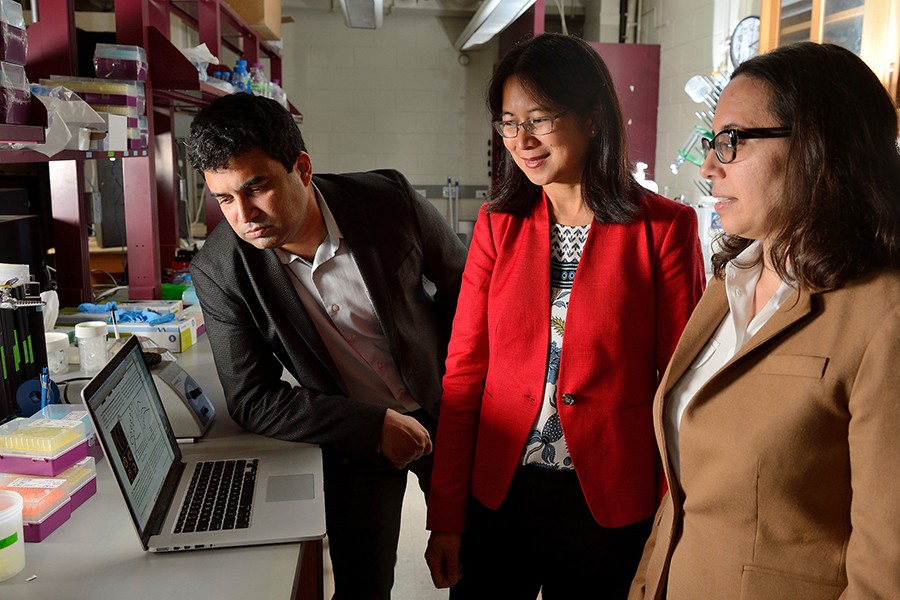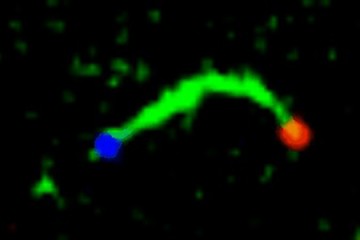Biochemical engineers at Johns Hopkins University used sequences of DNA molecules to cause water-based gels to change shape, demonstrating a new tactic to produce soft robots and "smart" medical devices that don't rely on cumbersome wires, batteries, or tethers.
The research, supervised by three faculty members in the university's Whiting School of Engineering, is detailed online today in the journal Science.

Image caption: The team members reported that their process used specific DNA sequences called "hairpins" to cause a centimeter-sized hydrogel sample to swell to 100 times its original volume. The reaction was then halted by a different DNA sequence, dubbed a "terminator hairpin." This approach could make it possible to weave moving parts into soft materials, which, the researchers said, could someday play a role in creating smart materials, metamorphic devices, complex programmed actuators, and autonomous robots with potential marine and medical applications. To control how shape-shifting occurs in different parts of the target hydrogel, the researchers took a cue from the computer industry. They employed a photo-patterning technique similar to the one used to make tiny but intricate microchips. Various biochemical patterns embedded in different regions of the gel were designed to respond to specific DNA instructions to cause bending, folding, or other responses. "DNA sequences can be thought of as an analog to computer code," said David Gracias, a professor in the university's Department of Chemical and Biomolecular Engineering, and one of two senior authors of the Science article. "Just as computer software can direct specific tasks, DNA sequences can cause a material to bend or expand in a certain way at a specific site." [img id="18752" size="medium" align="left"]
This is not an unusual occurrence in nature, he added.
"Shape changing is very important in biology," Gracias said. "Think about how a caterpillar turns into butterfly."
To confirm their ability to control which hydrogel targets were activated, team members used DNA sequence-responsive flower-shaped hydrogels. In each "flower," two sets of petals were fabricated, and each set was designed to respond only to one of two different DNA sequences. When exposed to both sequences, all of the petals folded in response. But when they were exposed to just one of the sequences, only the petals matched to that sequence folded.
The team also fabricated hydrogel crab-shaped devices in which the antennae, claws, and legs each curled up in in response to their matching DNA sequence. The crab devices—a shape selected in honor of the popular seafood for which Maryland is known—remained in their actuated state for at least 60 days.
"We've been fascinated by how living cells can use chemical signals to decide how to grow or move and use chemical energy to power themselves," said Rebecca Schulman, the study's other senior author and an assistant professor of chemical and biomolecular engineering. "We wanted to build machines that could act in a similar way. Our fabrication technology makes it possible to design very complicated devices in a range of sizes."
Vicky Nguyen, a Johns Hopkins expert in the mechanics of polymers and biomaterials and an associate professor in the Department of Mechanical Engineering, provided key contributions to the research and was a co-author of the paper.
Posted in Science+Technology
Tagged biochemistry, chemical engineering, biomolecular engineering, hydrogels









